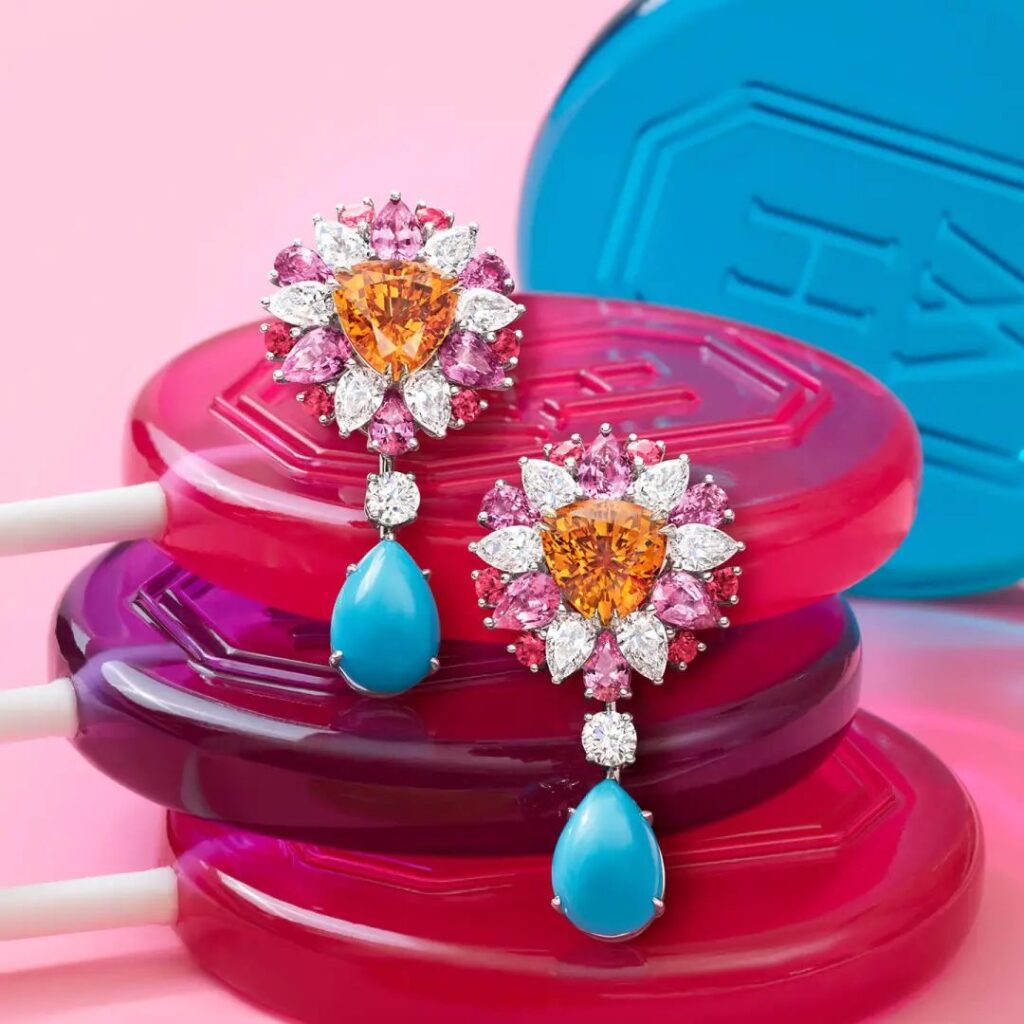After months of absence, Kate, the Princess of Wales, has finally returned to the public eye, dispelling various rumors and suspicions.

Since acquiring the title of Duchess of Cambridge, Kate’s most shining moment was undoubtedly when she wore the Cambridge Lover’s Knot tiara, also known as the “Pearl Tears.”
This tiara, passed down through generations and rich in significance, first gained prominence due to Princess Diana’s stunning beauty. Even the young Queen Elizabeth II once regarded it as a treasured possession.

However, beyond the wildly popular “Pearl Tears” and the Empire State Diadem symbolizing the glory of the empire, many of these priceless antique jewels once belonged to a legendary woman.
Regardless of the occasion, everyone would bow deeply in her presence, not only because of her imposing presence as Queen but also due to the dazzling jewels she wore – Queen Mary of the United Kingdom.

Even though she lived in the 20th century, Queen Mary, adhering strictly to royal protocols, always wore the whalebone corsets favored by ladies of earlier times – she was the last generation of queens to consistently wear such corsets.
When she appeared adorned with a crown and resplendent gowns, the brilliant sparkle on her chest served as the best testament to Queen Mary’s role as the “Glory of the British Empire.”

The stomacher, a giant jeweled ornament popularized in the 18th century, was often referred to as “a lady’s second crown.”
Stomacher Corset brooch
01
The Evolution of the Brooch
“My dear husband, please buy me a scarlet stomacher from London, half a yard wide, lined with velvet, to keep my abdomen warm on days when I must ride a horse.”

A letter sealed with the “Countess of Southampton” wax seal was sent out. The Countess’s gaze drifted through the window towards London, as if she could already envision her husband selecting the stomacher for her.
Indeed, an exquisite, luxurious, and expensive stomacher, in the most fashionable style of the time – what could be more thrilling?

Unknown artist, 1618, Bedford Estate

Marcus Gheeraerts the Younger, 1590-1600, Leeds Castle
The Countess was one of Queen Elizabeth I’s ladies-in-waiting in her later years. As such, her every word and action emulated the Queen, and her pursuit of trends and fashion naturally originated from Her Majesty.
In 16th century Europe, the stomacher was an essential fashion item in the wardrobe of every woman of status.
Women of the time typically wore tight corsets over their petticoats to exaggerate their waist-to-hip ratio.
The corsets were usually front-opening, and the separate triangular stomacher perfectly concealed the unsightly laces and petticoat at the opening.


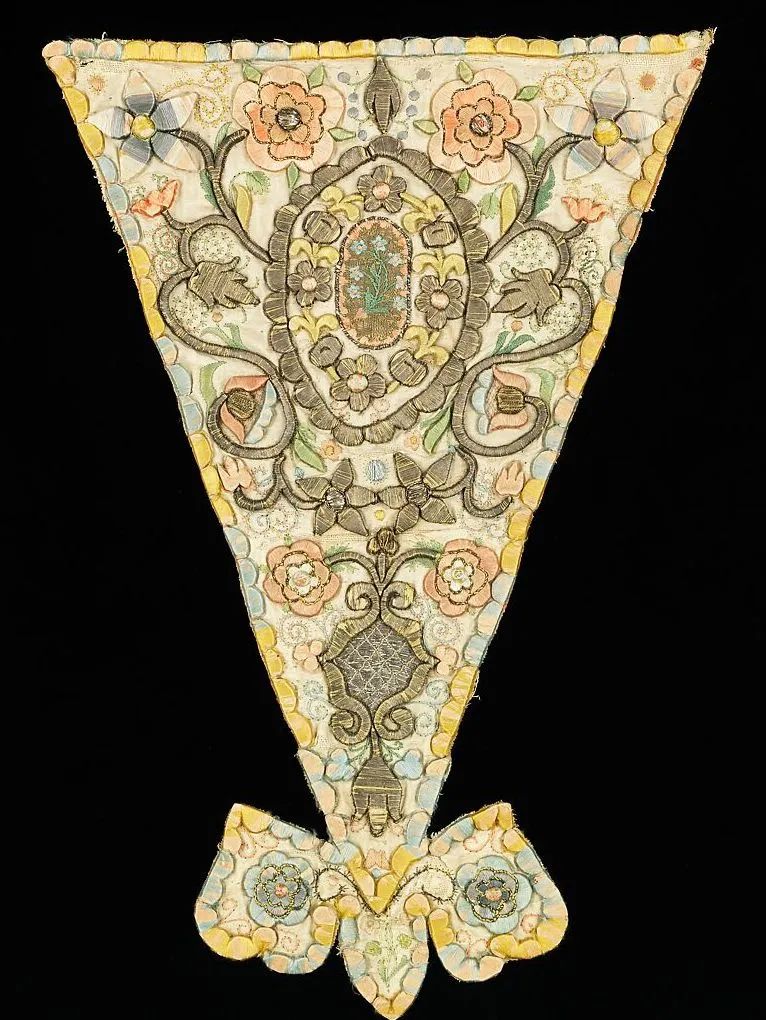


Although many stomachers were perfectly integrated into dresses, for noble ladies seeking perfection, this was still too plain.
The topic ladies loved to discuss when gathered together was how to select a stomacher with contrasting patterns or colors that complemented their dresses.
As the most eye-catching area that easily drew attention, stomachers were usually decorated with black, red, or colorful embroidery, as well as metallic lace.
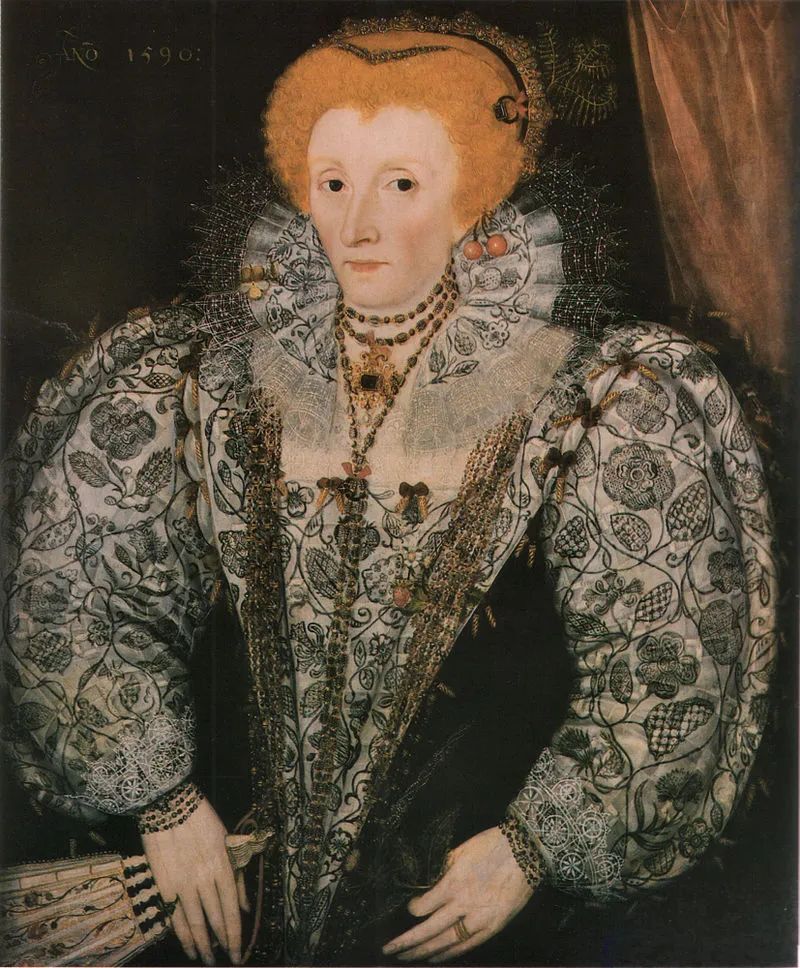
Unknown artist, 1590, Jesus College, Oxford University


Gilles Claeissens, 1568-1572, Unknown location
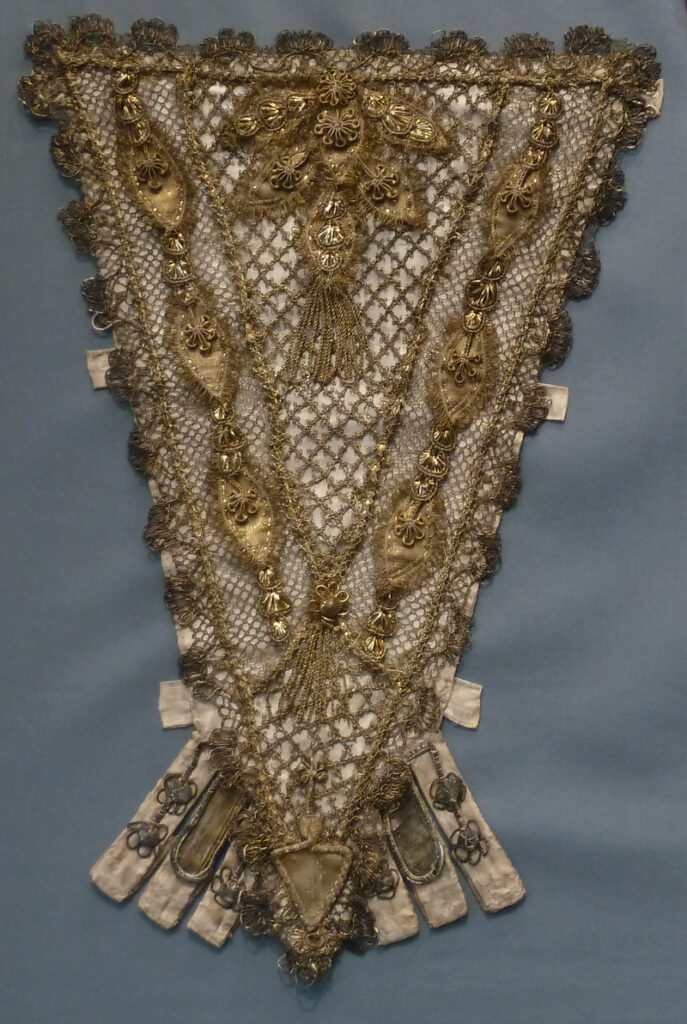
Now in the Los Angeles County Museum of Art
Noblewomen with greater wealth, such as Elizabeth I, would adorn their stomachers with numerous pearls and diamonds, and decorate their matching gowns with jewels from the same set.
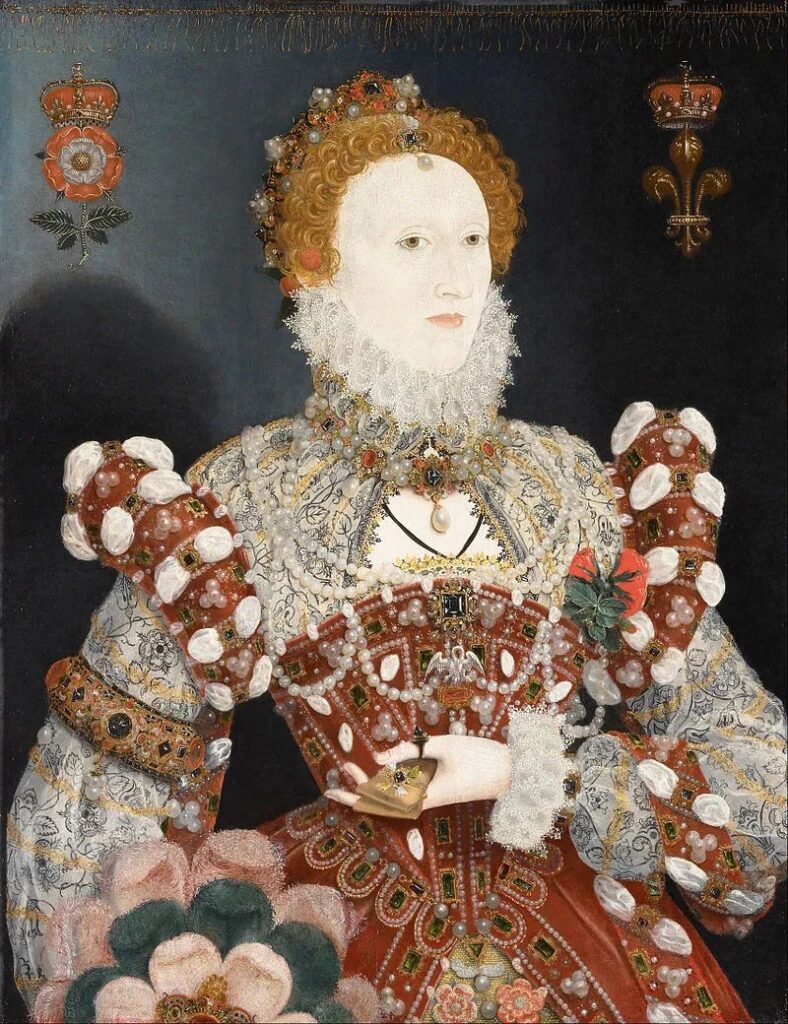
c. 1573-1575, Walker Art Gallery

As stomachers became increasingly ornate, a new problem arose – overly soft bodices could not support the weight of heavy jewels and gems.
Thus, the conical stomacher supported by whalebone was born.


These supported stomachers not only allowed for more jewelry decoration without sagging but also enhanced the fullness of a woman’s figure with their smooth, broad shape.
In 1635, King Charles I’s wife, Queen Henrietta Maria, awarded her tailor a high fee for “putting whalebone into all of the Queen’s stomachers during Her Majesty’s pregnancy.”




In 18th century France, a new type of stomacher that perfectly combined Rococo romanticism with French court extravagance sparked a new wave of popularity – the eschelle.
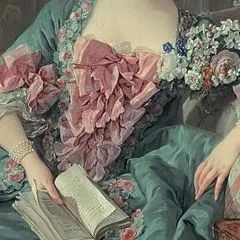

This girlish stomacher was invented by the “fashion ambassador” Madame de Pompadour and was quickly imitated throughout Europe, becoming part of the classic French court dress.



This fashion trend reached its peak during the reign of Louis XVI’s wife, Marie Antoinette. The Queen, known for “bankrupting the entire French treasury,” had an obsessive passion for lace, silk, and jewels.
In her portraits, almost every court dress stomacher is extremely luxurious.
Layer upon layer of lace and silk ribbons nearly cover the entire chest and sleeves, with a vast array of precious gems sewn onto the garments, exemplifying maximalism at its finest.
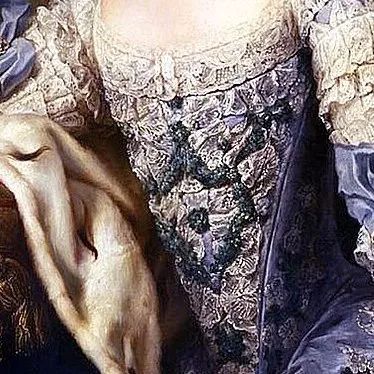


However, this extravagance ultimately accelerated the decline of the Bourbon dynasty, and the stomacher fashion trend began to wane.
02
A Lady’s Second Crown
From the latter half of the 18th century, with the development of craftsmanship, more novel and versatile detachable jewels emerged.
Artisans drew inspiration from stomachers, designing the diamonds and pearls that were once sewn onto fabric into a new type of large, elaborate brooch worn on the chest, replacing the jeweled stomacher – the Stomacher brooch.


Stomacher brooches, typically composed of multiple parts, generally had an inverted triangular shape.Like Madame de Pompadour’s eschelle, these large brooches were widest at the top half of the neckline, gradually tapering towards the bottom.

In the Victorian era, romanticism and retro trends coexisted. From literature to art, from commoners to royalty, everyone pursued a more aesthetic and free state of mind.
Women’s fashion began to emulate the 16th century, and the pursuit of wasp waists and beautiful large skirts reached unprecedented levels of enthusiasm.

The famous crinoline and bustle skirts were born in this era.
Emulating the noble ladies of the past, wearing large Stomacher brooches on the chest became an inevitable choice for every lady of status when attending formal occasions.


Winterhalter painted several portraits of Princess Sissi, Empress Eugénie, and Queen Victoria, making his work extremely valuable for reference. From the above two works, it’s clear that the original triangular stomacher position has been replaced by brooches.
The most popular tremblant jewelry of the time was also perfectly incorporated into the design of Stomacher brooches.

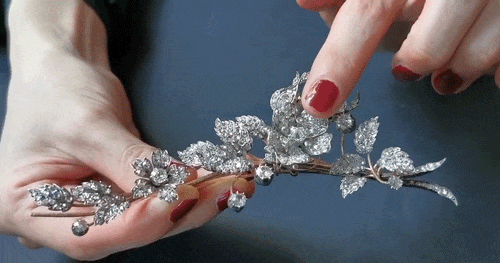

Due to the weight of gems and pearls, Stomacher brooches rarely appeared on everyday clothing. They were only worn on supported corsets when attending court events or balls.
The dazzling and magnificent Stomacher brooches were thus called “a lady’s second crown” – after all, only these giant Stomacher brooches could be as solemn and elegant yet eye-catching as a crown.
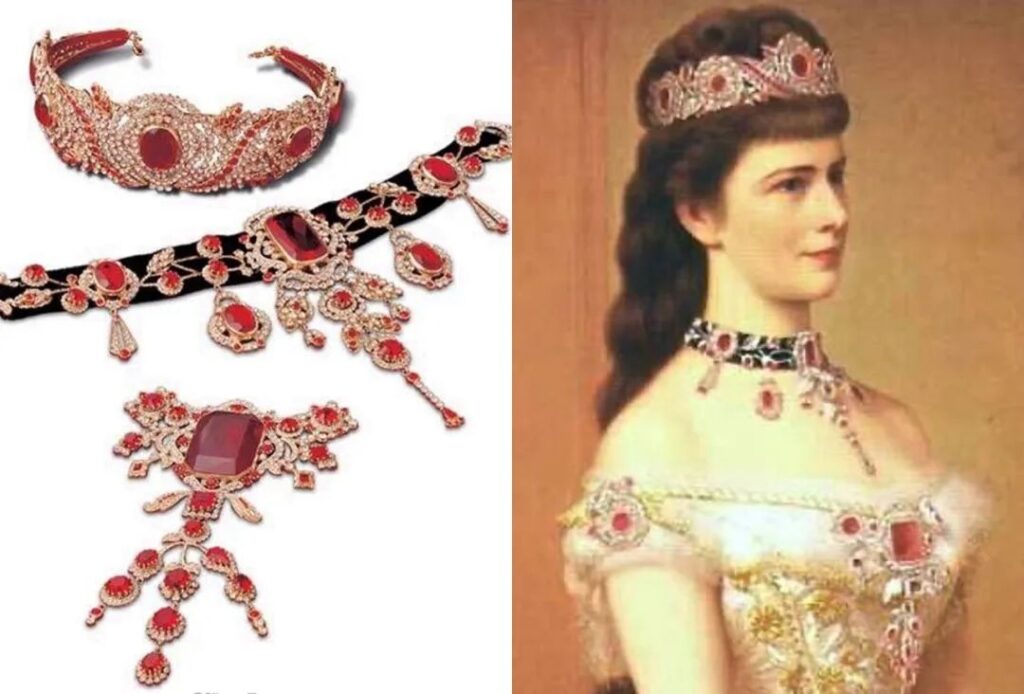
Empress Eugénie, once considered one of the “Two Beauties of Europe” along with Princess Sissi, owned an incredibly luxurious Stomacher brooch.
This bow and tassel diamond brooch was specially commissioned for Empress Eugénie in 1855, two years after her marriage to Napoleon III, by the French jeweler François Kramer.


Initially, this piece of jewelry consisted only of the diamond bow section and was worn as a clasp on a diamond belt. However, Eugénie, known for her creativity, was not satisfied with this simple design.
She rehired Kramer to transform the bow belt clasp into a larger piece of jewelry, resulting in this exquisite brooch with five short tassels and two elaborate diamond long tassels.
Another of Empress Eugénie’s slightly smaller Stomacher brooches, featuring red currant leaves, was part of a complete parure set consisting of 30 diamond jewelry pieces with red currant elements.


The term “parure” refers to a matching set of various jewelry pieces. A complete parure typically includes a necklace, earrings, brooch, bracelet, and a tiara.
If the set contains only earrings and a necklace, or a tiara and earrings, or other incomplete combinations, it is called a demi-parure.


At the time, a complete and dazzling parure was undoubtedly the best proof of status in high society—apart from royalty and nobility, who else had the financial means to commission such an incredibly expensive complete set of jewelry?


Queen Maria Christina of Austria’s most famous diamond Stomacher brooch also came from a parure.
This luxurious and brilliant parure was a wedding gift from Alfonso XII and included a coat of arms crown, a tiara, a floral brooch, a pair of bracelets, a necklace, and a Stomacher brooch.
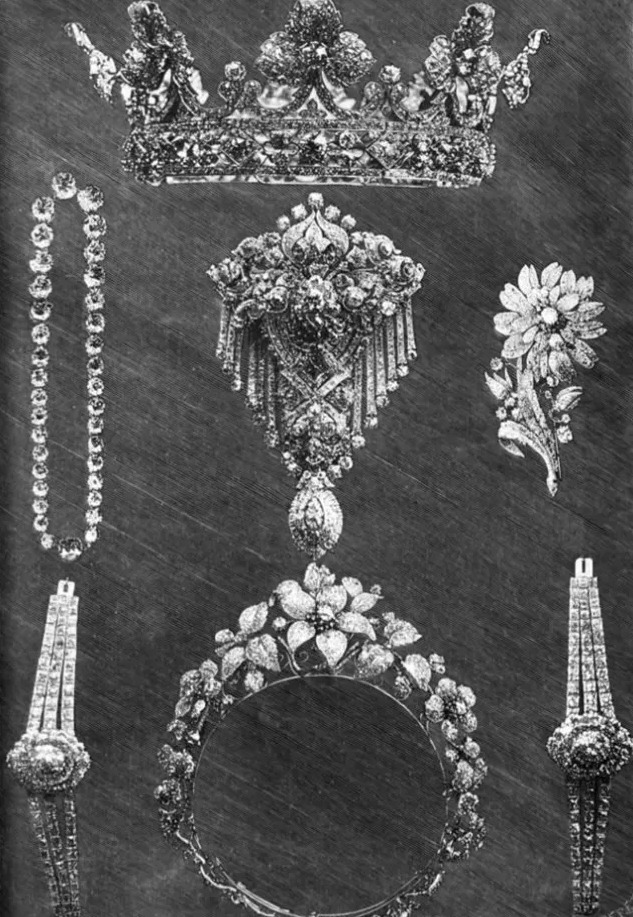

Among these pieces, the most eye-catching was undoubtedly the diamond Stomacher brooch, larger than a palm.

Unfortunately, from the late 19th century, with the development of the times, royal families in various countries experienced a decline in both power and wealth.
Most jewels were either lost or sold, and as one of the most expensive pieces of jewelry, Stomacher brooches could not escape this fate.
03
Classics Never Fade
The last glory of the empire on which the sun never sets, Queen Mary, both ruthless and full of love, would stand alone to maintain the royal family’s final dignity even if everyone else strayed from tradition.
In the Duke of Windsor’s memoirs, he mentioned several times Queen Mary’s jewelry collection that filled several rooms.

Whenever Queen Mary appeared in public, she adorned herself from head to toe with gold, silver, and jewels, earning her the nickname “walking Christmas tree.”
In the past, countless royal jewels were lent out, stolen, or auctioned. However, Mary, with her extensive knowledge and research on the royal collection, identified many long-lost artifacts and artworks multiple times and repurchased them at high prices.
From the beginning of the 20th century, many large-scale jewels were dismantled into smaller, more fashionable pieces due to their overly formal style and outdated designs.
However, Queen Mary remained a steadfast supporter of giant tiaras and Stomacher brooches.


At Charles’s coronation ceremony, the new Queen Consort Camilla wore Queen Mary’s crown, with the most eye-catching giant diamond at its center known as the Cullinan V.
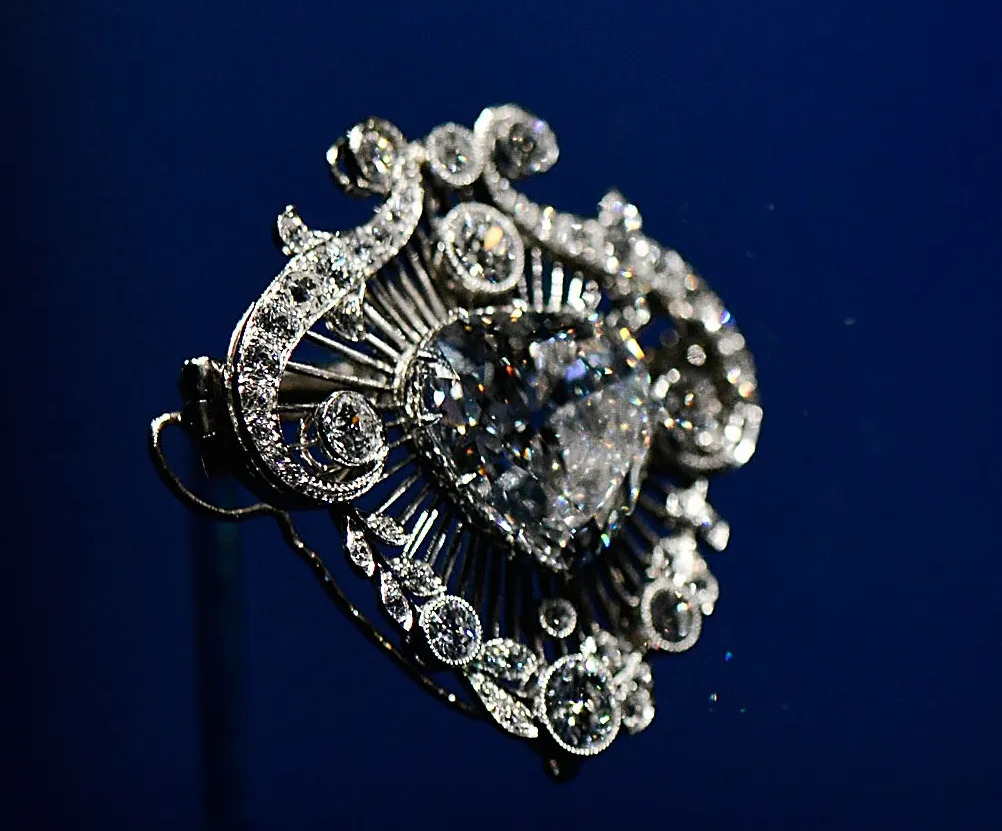
True to its name, this 18.8-carat heart-shaped diamond originated from the world-famous Cullinan diamond, weighing over 3,000 carats, which once belonged to Edward VII.
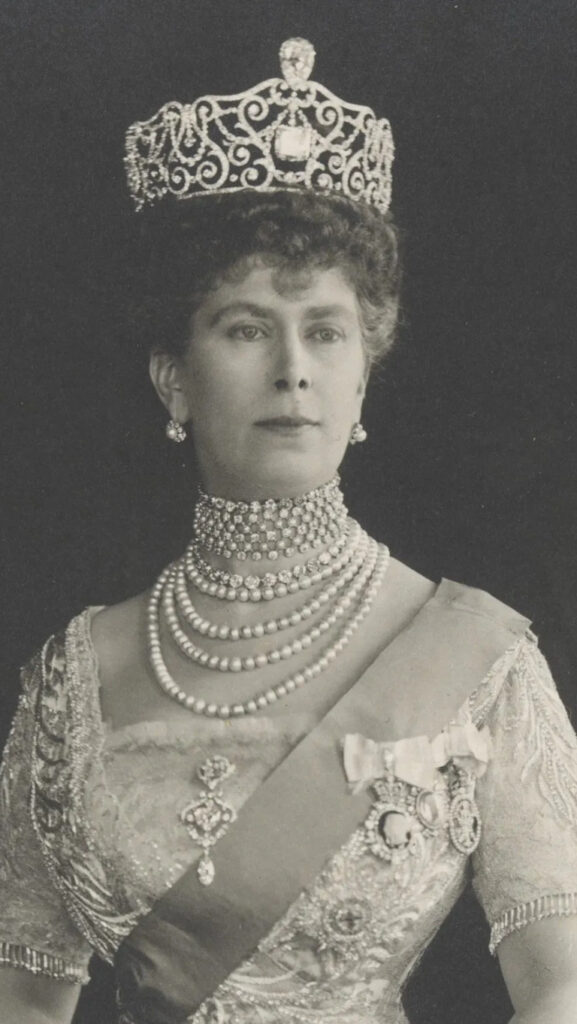


Few people know that this already beautiful brooch is actually part of a giant Stomacher brooch – the Delhi Durbar Stomacher brooch.
This exquisite piece of jewelry features a carved emerald with a diamond frame at the top, the Cullinan V diamond brooch surrounded by diamond leaf ornaments and five emeralds in the center, and a pendant composed of the Cullinan VIII and a pear-shaped emerald at the bottom.


Each part of the brooch can be detached and worn separately. For instance, the eye-catching diamond and emerald brooch worn by Camilla is the topmost part of the Delhi Durbar Stomacher brooch.
Due to the brooch’s immense value, even Queen Mary herself rarely wore this stunning piece of jewelry afterward.

Queen Mary’s most famous Stomacher brooch is a giant piece of jewelry composed of three diamond brooches of different sizes.
This brooch was specially commissioned for Queen Mary in 1920, incorporating a Stomacher brooch gifted by the Kapurthala Maharaja and a crescent brooch presented by Swansea in 1893.

However, this brooch’s fame has little to do with Queen Mary herself, as she only wore it once in public.
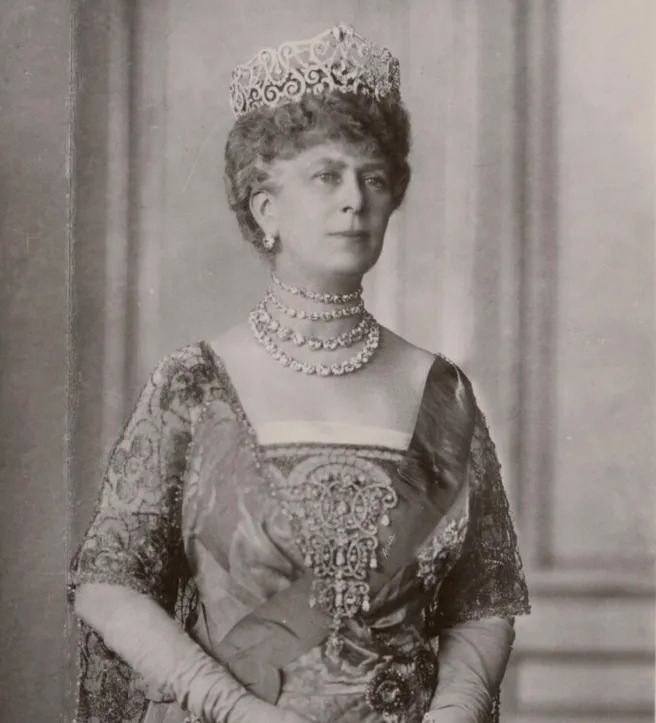

On the contrary, Queen Elizabeth II favored it greatly, wearing the bottom part of it multiple times during her princess years.
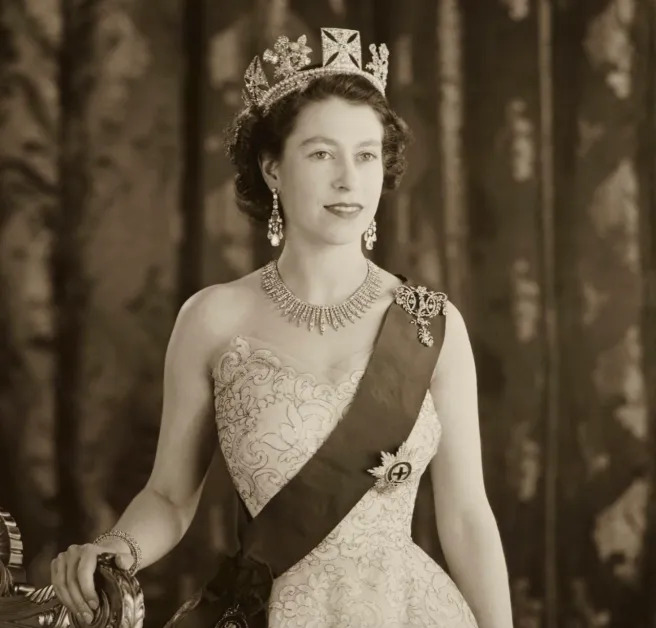
It wasn’t until the Golden Jubilee banquet that the Queen wore the complete version of this brooch for the first time, instantly elevating this “antique” to become one of the most stunning pieces of jewelry in the British royal collection.
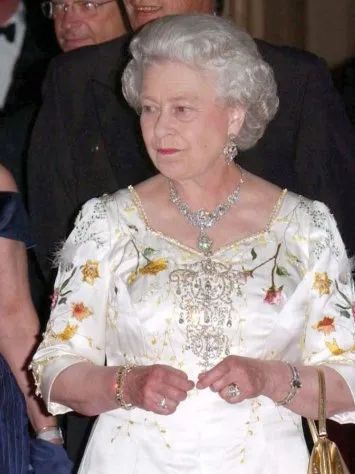
Fashion is ever-changing; yesterday’s trends may seem outdated today.
However, like Stomacher brooches, these jewels that once shone brilliantly in paintings and historical records continue to sparkle today, accompanied by the wisdom of generations of craftsmen and touching stories.
Liberal and open-minded thinking, along with the prevailing minimalism, eventually discarded the once-mandatory corsets and large skirts.
Just like in “Downton Abbey,” the gap between generations can be clearly observed in the clothing and tastes of the Dowager Countess Violet Grantham and Lady Mary.

Stomacher brooches, once symbols of noble status, have now exited the stage along with the fall of dynasties.
However, even today, high-end jewelry brands like Cartier still draw inspiration from antique jewelry, and many fashion shows paying homage to classics have featured the silhouette of Stomachers.
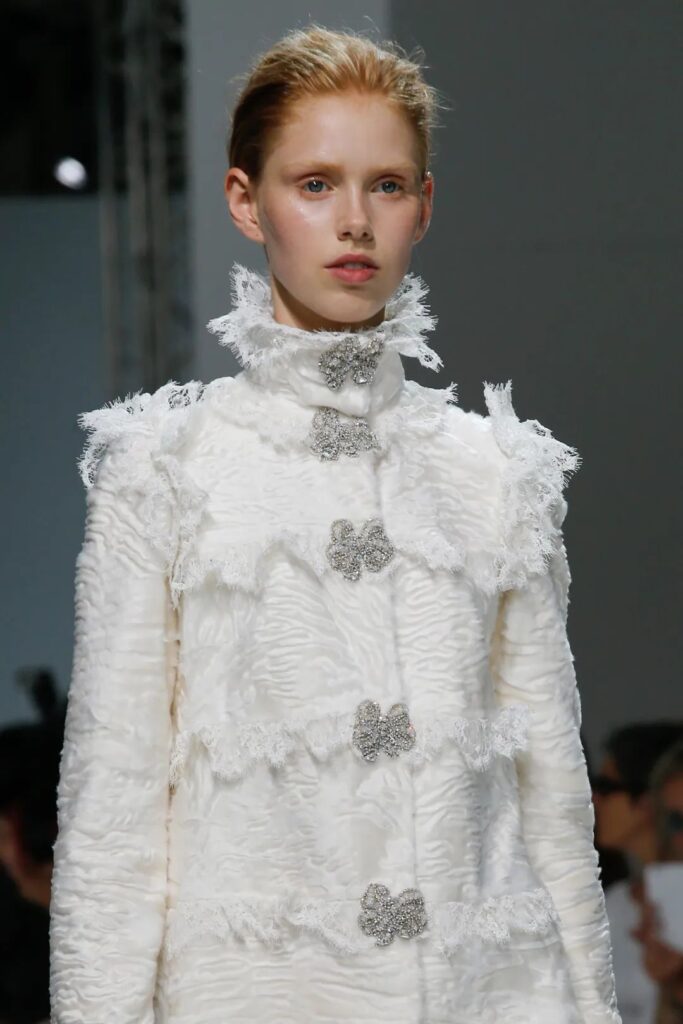
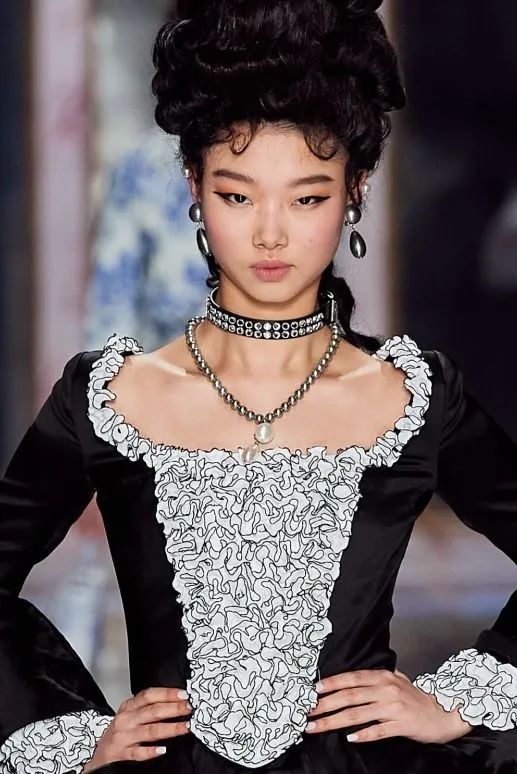

Time flies, and beauty fades,
But some things never grow old with the passing years,
Perhaps this is the unique romance of reminiscing about the past.
Crowning Glory: A Dazzling Journey Through the British Royal Family’s Most Iconic Jewels and Tiaras
Tweet


